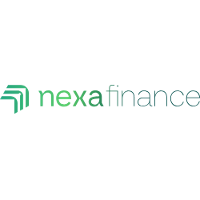Technology has changed almost everything about how we live — from the way we communicate to the way we shop. Now, it’s transforming something even more personal: how we invest.
Welcome to the new era of robo-advisors, where artificial intelligence and automation work together to help anyone — not just the wealthy — invest smarter, faster, and with more confidence.
The idea of handing your money to an algorithm might have sounded risky a decade ago. Today, it’s quickly becoming the new normal for investors around the world.
What Exactly Is a Robo-Advisor?
Think of a robo-advisor as a digital financial planner.
You tell it your goals — maybe saving for retirement, buying a house, or just growing your money — and it builds a portfolio for you using data and algorithms instead of emotions or gut instinct.
Behind the scenes, it automatically buys, sells, and rebalances your investments to keep everything aligned with your plan.
Platforms like Betterment, Wealthfront, and Vanguard Digital Advisor started this trend years ago, and now robo-advisors collectively manage trillions of dollars worldwide. What was once a fintech experiment has become a cornerstone of modern personal finance.
From Basic Algorithms to True Intelligence
Early robo-advisors were basically calculators with fancy interfaces: answer a few questions, get a portfolio, and check back in a few months.
But things have changed.
Today’s robo-advisors use artificial intelligence, real-time data, and behavioral analytics to make far more nuanced decisions. They track your spending, monitor the market, and even learn how you react to volatility.
If you tend to panic-sell during market dips, the algorithm might quietly reduce your exposure to risk or send you reminders about staying long-term focused.
Dr. Maya Linton, Head of Digital Wealth at Nexa Finance, puts it simply:
“Tomorrow’s robo-advisors won’t just manage your money — they’ll understand you.”

Personalized Advice for Everyone
One of the biggest promises of this new generation of robo-advisors is personalization at scale.
It’s like having a human advisor who knows you — your habits, your dreams, your fears — but can serve millions of clients at once.
A young professional in New York saving for a home might get a conservative, short-term portfolio.
A 45-year-old in Texas saving for retirement could get a globally diversified ETF plan that automatically adjusts to inflation and interest rates.
Some platforms even allow ethical investing filters, so your portfolio can reflect your values — whether that means avoiding fossil fuels or focusing on clean technology.
One Connected Financial Ecosystem
Robo-advisors are no longer just apps for investing. They’re becoming financial ecosystems.
Imagine opening one app and seeing:
- How much you spent this month,
- How much you can safely invest next week,
- And how your portfolio automatically adapts when your paycheck changes.
That level of integration is becoming reality thanks to open banking and AI-driven automation.
This broader shift mirrors the trend we covered in “The Age of Crypto ETFs Heats Up: What Small Investors Should Know” the ongoing movement to make investing simpler and more accessible for ordinary people.
The Human Touch Isn’t Going Away
Of course, even the smartest algorithm can’t fully replace human empathy.
That’s why many experts believe the future lies in hybrid models — a partnership between humans and machines.
AI handles the math: diversification, tax optimization, and rebalancing.
Humans handle the heart: helping clients plan for a child’s education, navigate job loss, or stay calm in a bear market.
In fact, a 2025 Vanguard study found that investors using a mix of robo and human advice perform better and stay invested longer than those relying on either alone.
Why So Many People Are Switching
The reasons are clear:
- Lower costs: Robo-advisors charge between 0.15% and 0.35% per year — a fraction of traditional advisor fees.
- No minimums: You can start investing with as little as $100.
- Less stress: Once you set your goals, the system takes care of everything.
- No bias: Algorithms don’t chase trends or panic when markets dip.
In short, robo-advisors are making professional-grade investing tools available to everyone, not just those with six-figure portfolios.
But It’s Not All Perfect
Like any technology, robo-advisors have risks.
Their strength — automation — can also be a weakness if not managed properly.
Concerns include:
- Algorithmic bias: If trained on skewed data, AIs could make unfair assumptions.
- Transparency: Some platforms still don’t fully explain how they make decisions.
- Cybersecurity: More data means more responsibility to keep it safe.
That’s why regulators, including the U.S. SEC and the European Union, are pushing for what’s called “explainable AI” — ensuring algorithms can justify every investment decision they make.
Regulation and Responsibility
Governments are now setting clearer rules for automated financial advice.
The EU’s AI Act, for example, will require robo-advisors to show how their models make recommendations, while the U.S. is exploring AI compliance audits for fintech companies.
These measures are designed not to slow innovation, but to build trust — something every investor deserves.
A Future That Feels Human
So, what does the next five years look like?
Expect robo-advisors to become even more conversational, perhaps through voice assistants or AI chat interfaces.
They’ll guide users like a coach — explaining why certain moves were made, what market factors were considered, and how to improve your long-term strategy.

In essence, the next generation won’t just manage your portfolio — it will teach you how to think like an investor.
Conclusion
The future of robo-advisors isn’t about replacing humans. It’s about empowering them — giving every person access to smart, affordable, and personalized investing.
The financial world used to belong to those who could afford expert advice.
Now, it’s becoming a world where anyone with a smartphone can have a digital financial partner by their side.
If automation is the engine, human curiosity and trust are the fuel. Together, they’re driving us toward a future where investing is simpler, smarter, and finally fair for everyone.
